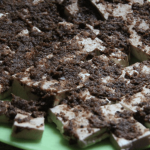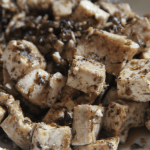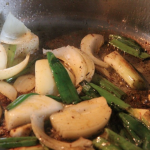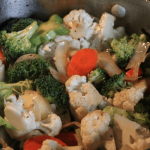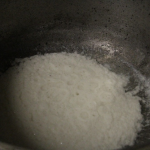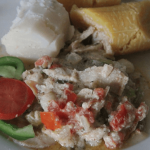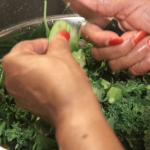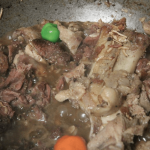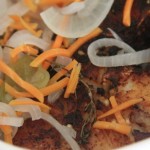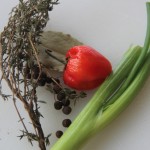A few years ago, my extended family started a monthly gathering to cook the meals that we grew up on, the dishes that we don’t have as often because we no longer have the luxury of someone else to prepare them for us.
Each gathering was an all-day affair with reminiscences about growing up, side-splitting, tears-running-down-the-face laughter about who did what when, and plenty to eat and drink. The best part was you never knew which old favorite the hostess (the women usually did most of the cooking) would surprise us with.
One of my cousins is married to a vegan. When it was my turn to host, I scratched my head for weeks trying to think of something that I could make that’s different from his regular fare. Turning to my cookbooks, I found this recipe for Stir Fry Vegetables with Jerk* Tofu.

The cookbook, Jerk From Jamaica, is from Walkerswood, a local company that makes spices, sauces, preserves and canned vegetables. Walkerswood takes its name from the community in St. Ann where it has its operations. The company sources its produce from local farmers and from its own farms in St. Ann and St. Elizabeth, processes them at the factory in Walkerswood, and distributes them in North America, the UK, New Zealand and other countries. The recipes in the cookbook are all made in their kitchen using their products.
Stir Fry Vegetables with Jerk Tofu is a simple dish that goes over well with most people. It’s light and flavorful and pretty easy to make. Once you prepare the tofu and chop the vegetables, the most time-consuming part is frying the tofu. Since we have to fry it, I usually let the tofu drain overnight to remove as much of the water as possible.
The next morning, I cut it into cubes no more than a quarter of an inch thick and smear on the jerk seasoning. Use a light touch here as tofu breaks easily.
Jerk seasoning can be either wet or dry. If you have dry seasoning, mix it with oil, as the recipe suggests, so it will be easier to spread. Whether wet or dry, spread the seasoning evenly and turn the tofu over to coat the other side. Once that’s done, set aside the tofu to marinate for about four hours.
The recipe calls for carrots, zucchini, cauliflower, green cabbage, pak choy, sweet peppers or broccoli but don’t panic if you don’t have them. I use what I have, which is usually broccoli, cauliflower, carrots, and red and yellow peppers. The most important thing, I think, is to have a mix of firm and soft, colorful vegetables to give the dish variety in texture and color.
Wash and chop the vegetables and scallion and set them aside. I prefer to cut the onion into wedges instead of slices.

Most of your work will be in frying the tofu. Once that is done, all you have to do is stir fry the vegetables. When I made this dish recently, cooking time was about 30 minutes.
Stir Fry Vegetables with Jerk Tofu is a great one-pot meal that’s a hit on any occasion. I’ve made it for Thanksgiving, Christmas and many gatherings. Hope you’ll give it a try.
What’s jerk?
Jerk is a way of cooking that originated in Jamaica. It involves rubbing meat (back then it was only pork) with a mixture of spices and cooking it over a pimento fire. The pimento wood adds a distinct smoky flavor. Jerk also refers to the spices that are used to marinate the meat.
These days, jerk sauce is bottled and sold widely and can be used to jerk fish, chicken, sausages, even vegetables.
How to Join the FoodieTuesday Linkup
Join the FoodieTuesday linkup by –
- Posting a foodie photo on your blog
- Adding the link to your foodie post in the link tool at the bottom of this post
- Visiting participants’ blogs and leaving a comment and/or tweeting their post
- Tweeting this post using the hashtag #FoodieTuesday
Hope to see you at FoodieTuesday!
 Loading InLinkz ...
Loading InLinkz ...

